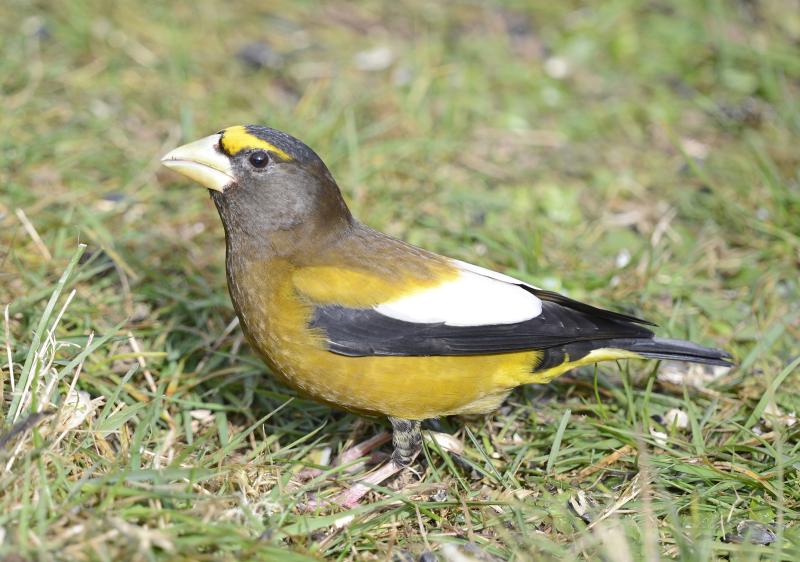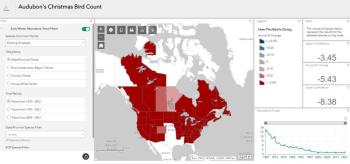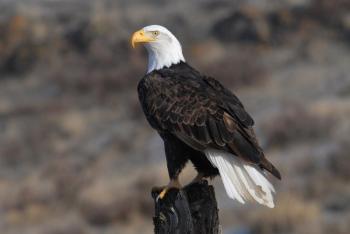Most people find birds beautiful, fascinating, even entrancing. Some recognize only a few that they see in the backyard and neighborhood—chickadees, crows, cardinals, blue jays. These they may know very well, finding peace and endless enjoyment watching their behavior and listening to their sounds.
Many of us become so enthralled that we keep learning how to identify more and more birds from here in Maine and eventually from places far away. Our pulses quicken when we see a bird that we don’t immediately recognize, imagining the possibility that it may be a species that we’ve never seen.
Whatever our level of interest in birds, we all have in common one thing: We want to make sure that the diversity and abundance of birds—and really all forms of biodiversity—remain healthy for generations to come.
Fortunately, there are many ways we can contribute to this cause. Making our opinions known to our elected representatives, urging them to vote for bird-friendly policies and financial support for efforts to protect our lands and waters are two obvious opportunities.
Another way to help is by counting those birds that we love.
What do we mean by that?
Without knowledge of whether the population of each bird species is increasing, decreasing, or staying the same, it’s hard to know what is impacting them and what we can do to keep their populations healthy. Tracking bird populations that range over vast continents and species that migrate extraordinarily long distances is exceptionally difficult. Doing so for North American bird populations is essentially only possible by engaging tens of thousands (millions, if you consider the whole world) of volunteers to become bird counters. By collecting together counts done by these tens of thousands of human bird sensors, it’s possible to get enough information to determine whether population numbers of a particular species is going up or down.
One of the longest-running versions of this kind of project is the Audubon Christmas Bird Count. For more than a century, bird enthusiasts have counted birds using a particular protocol in a few weeks’ period before and after the traditional Christmas holiday. This year, the official count period runs from December 14, 2023 to January 5, 2024. Each count takes place in a prescribed 15-mile diameter circle on a given day during the count period. The count area is divided up into smaller sections, and a count compiler assigns a team to cover a smaller section. Some counts in urban areas can have hundreds of people covering the count circle area; others that are more remote have only a handful.
Here in Maine, there were 36 Christmas Bird Counts last year. This means lots of opportunities to volunteer your time to count birds. If you are interested in participating, Maine Audubon has a website that lists all of the counts as well as the emails of the compilers you can contact to see if they can add you to a team. If you happen to live within an existing Christmas Bird Count circle, you may be asked to count the birds at your own backyard feeder during the day as your assignment.
The National Audubon Society, which organizes the count and compiles all the data, has built a very cool way to see how counting birds on a Christmas Bird Count can be used to assess the health of bird populations. It’s an interactive web platform called the CBC Trends Viewer. It allows you to select a bird species and look at trends from different U.S. states and Canadian Provinces and Territories, all calculated using data from Christmas Bird Counts.
For some species whose breeding range is far to the North, it’s the only population trend data available. We can see, for example, that evening grosbeaks have shown a major decline across North America since the 1970s. The viewer shows that bald eagles, on the other hand, have increased everywhere. Clearly, all the amazing conservation work that took place over the last 50 years that focused on bald eagles has been successful. And we can see from trend analyses of Christmas Bird Count data (and from other data sources as well) that birds like evening grosbeak now need much more conservation attention.
That’s the reason why your bird count is so important! Join in if you can and count birds for conservation.
Jeffrey V. Wells, Ph.D., is a Fellow of the Cornell Lab of Ornithology and Vice President of Boreal Conservation for National Audubon. Dr. Wells is one of the nation's leading bird experts and conservation biologists. He is a coauthor of the seminal “Birds of Maine” book and author of the “Birder’s Conservation Handbook.” His grandfather, the late John Chase, was a columnist for the Boothbay Register for many years. Allison Childs Wells, formerly of the Cornell Lab of Ornithology, is a senior director at the Natural Resources Council of Maine, a nonprofit membership organization working statewide to protect the nature of Maine. Both are widely published natural history writers and are the authors of the popular books, “Maine’s Favorite Birds” (Tilbury House) and “Birds of Aruba, Bonaire, and Curaçao: A Site and Field Guide,” (Cornell University Press).


































